Harajuku Street Styles: Boundless Creativity
Introduction
Japanese fashion, as transient as the sakura through different seasons, undeniably stands as one of the most innovative and captivating phenomena in the fashion realm. From Tokyo to Paris, from New York to Sydney, the street style inspired by Japan has garnered attention, setting sparks of inspiration among designers, bloggers, and fashion aficionados globally. But what truly lies behind this explosion of creativity, hues, and contrasts?
The roots of Japanese design delve deep into the nation's history, where tradition and modernity seamlessly intertwine. Ancient kimonos, ceremonial attires, and traditional motifs set the groundwork for what today symbolizes avant-garde fashion. Yet, what sets the Japanese fashion sentiment apart is the prowess to meld heritage with contemporary trends without compromising authenticity. This blend of tradition and innovation has birthed styles as diverse as Lolita, Gyaru, and Ametora, leaving indelible marks in the hearts of fashion enthusiasts worldwide.
As pivotal as history and culture are in shaping Japanese style, individualism and self-expression play equally significant roles. Japanese youth, in their quest to stand out, often craft unique styles or adapt and reimagine existing trends, infusing them with fresh vigor. It's in Japan that substyles emerged – nuanced variations of primary styles that gained traction owing to their distinctiveness and novelty.
What is the "Harajuku Style"?
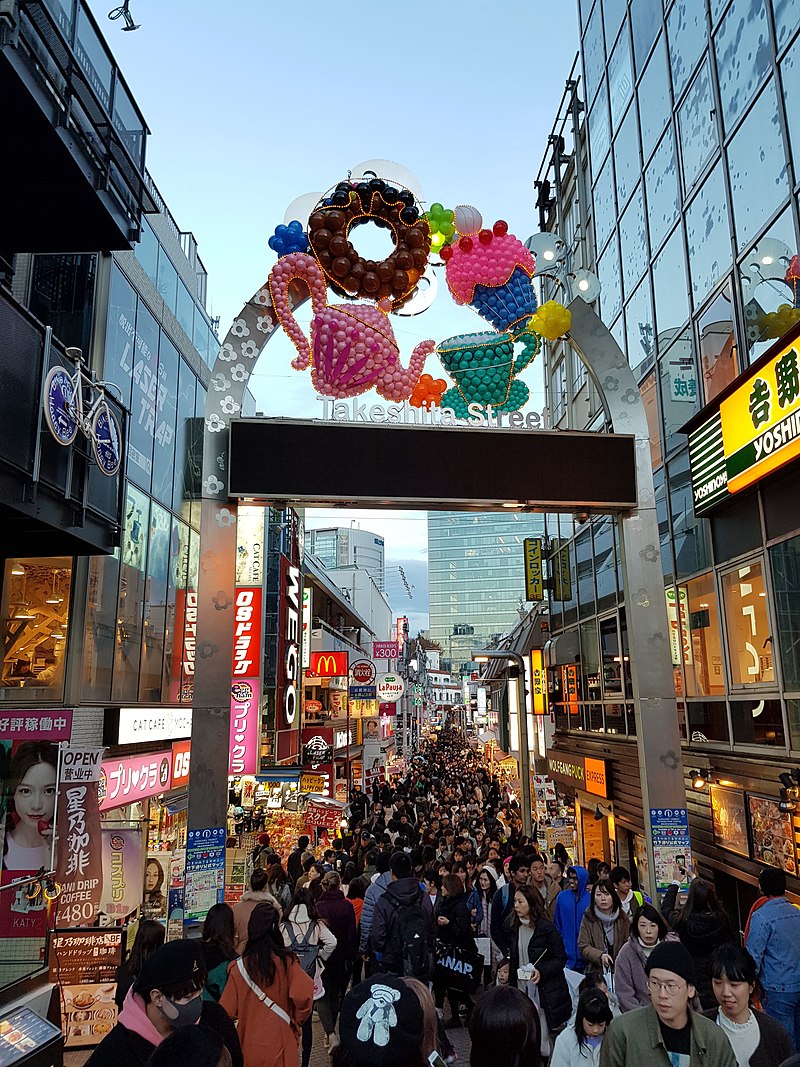
Harajuku has become an emblem of creativity and individualism in Japan, attracting the nation's youth eager to express themselves through distinct sartorial choices. This district gained fame courtesy of Takeshita Street, a hub housing myriad fashion boutiques, accessory stores, and other unique establishments reflecting the diversity and ingenuity of local fashion.
Harajuku styles exhibit vast diversity, amalgamating elements from punk rock, lolita fashion, kawaii, and many more. These styles often come off as flamboyant, vibrant, and bold, epitomizing youthful rebellion.
The concept of "Harajuku styles" gained global traction thanks to artists like Gwen Stefani and various TV programs and media articles spotlighting the district's unique fashion flair. Numerous international designers and fashion enthusiasts flock to Harajuku to glean inspiration and admire the one-of-a-kind street styles on display.
Types of Harajuku Styles
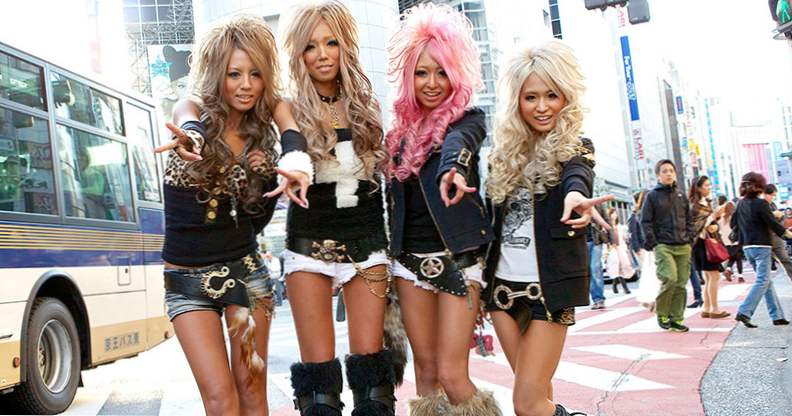
Intriguingly, Harajuku styles are in perpetual evolution, reflecting the dynamic and current trends in youth culture. Consequently, compiling a comprehensive list of every existing substyle seems an elusive endeavor. Moreover, even if we attempted such a feat, it might become outdated the very next day, given the ceaseless emergence of new trends and substyles in Harajuku. This stands as a testament to the unpredictability, excitement, and vitality of fashion in this part of the world.
Ametora
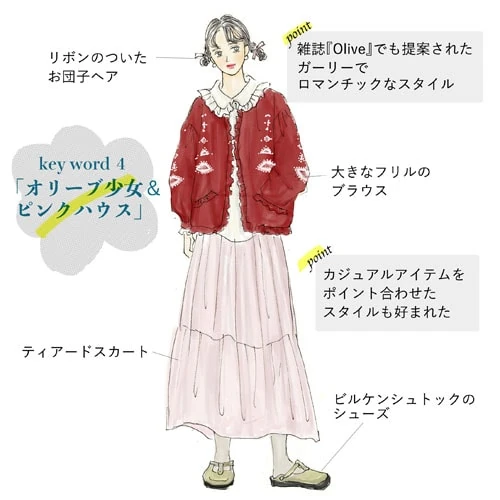
Characteristics and Appearance: Ametora is a perfect combination of Western classics with Japanese aesthetic sensibility. At the heart of this style are familiar items: jeans in a variety of cuts, from slim fit to wide, typically Japanese, as well as plaid shirts – from traditional colors to bright neon shades. Sweaters, often in thick knits and light colors, are another key element. Bomber jackets can be simpler and more minimalist, but also richly adorned with embroidery or patches referring to traditional Japanese culture. In Ametora, details play a crucial role: contrasting stitching, unusual buttons, original accessories like scarves, or handkerchiefs. The outfits are also complemented by footwear, from classic sneakers to loafers and brogue shoes. Importantly, hairstyles of those practicing this style are usually simple but well-styled, often with subtle vintage accents such as curled ends or carefully combed bangs.
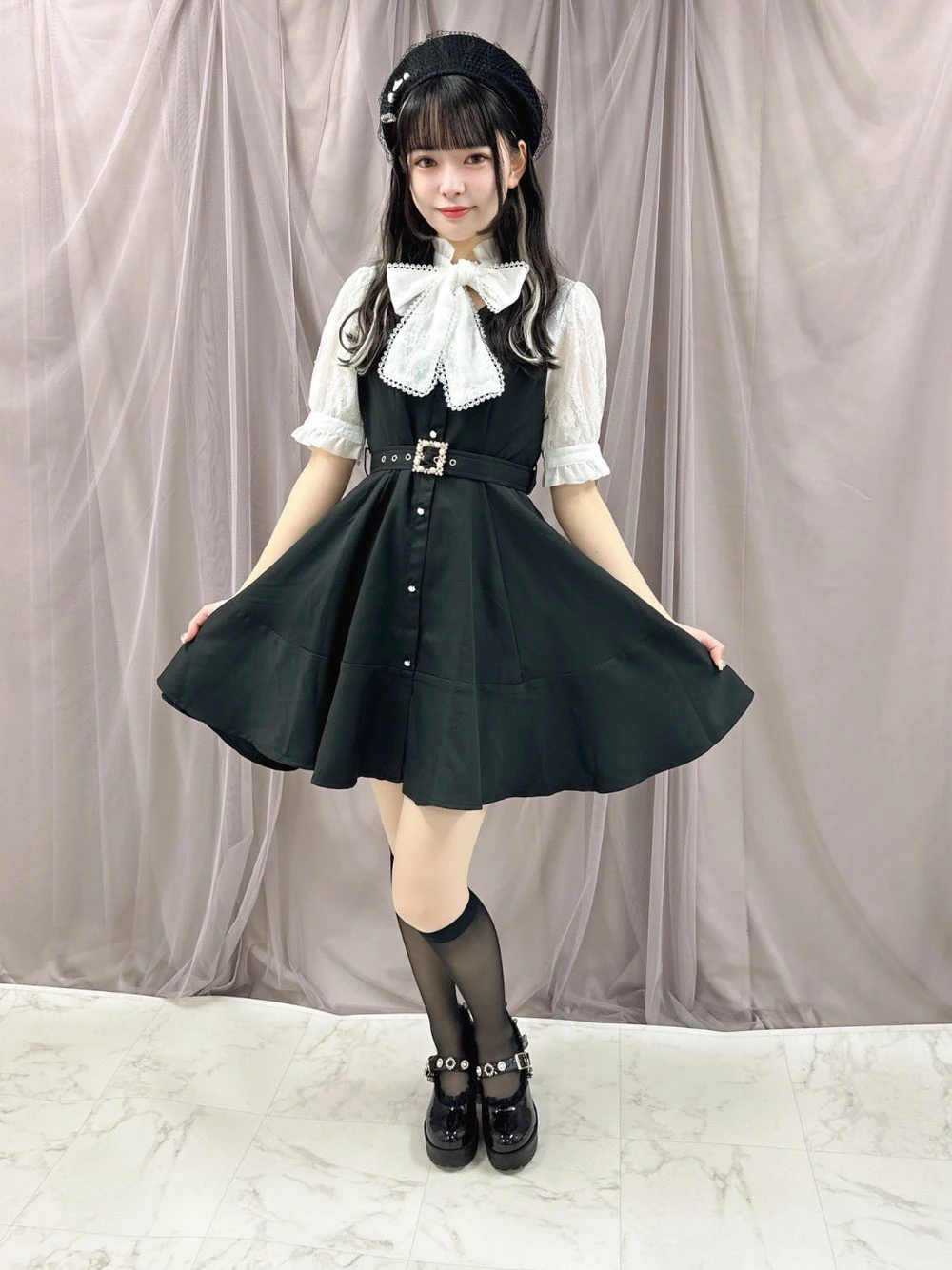
Social Identification and Substyles: Ametora attracted mainly the younger generation of Japanese who were fascinated by American culture and wanted to incorporate its elements into their daily wardrobe. As for the substyles of Ametora, they include:
• Amekaji: inspired by the American casual style of the 50s and 60s, • Bodikon: based on cheeky, tight-fitting outfits,
• Bosozoku: drawing inspirations from the rebellious style of Japanese motorcycle gangs,
• Japanese Preppy: inspired by American student style,
• Otome (Classic): a delicate, girlish style with vintage accents.
Cult Party Kei
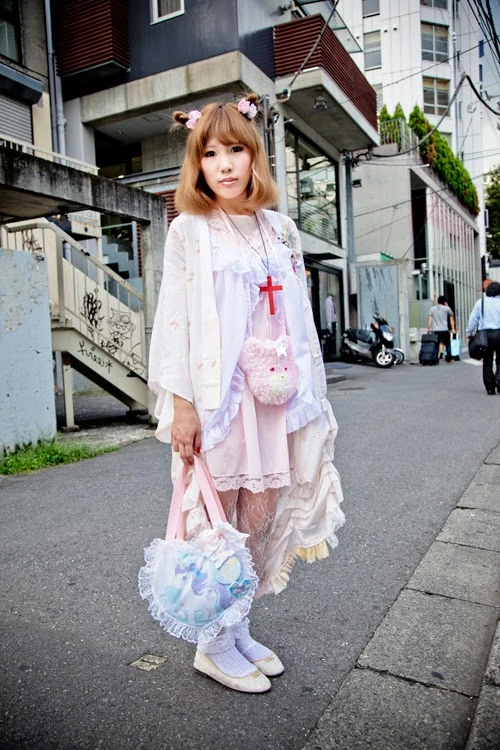
Characteristics and Appearance: Cult Party Kei is a dreamy, ethereal style that combines vintage elements, lace, pastel colors, and various fabric textures. Clothes are usually loose, layered, and full of ruffles, with accents such as lace, bows, or small decorations adding uniqueness. These are mainly dresses, skirts, and loose blouses, often decorated with floral or animal patterns. Unusual accessories such as brooches, beaded necklaces, or decorative hair bands are also added to the styling. Makeup in this style is subtle, with delicate pastel shadows and a light blush on the cheeks.
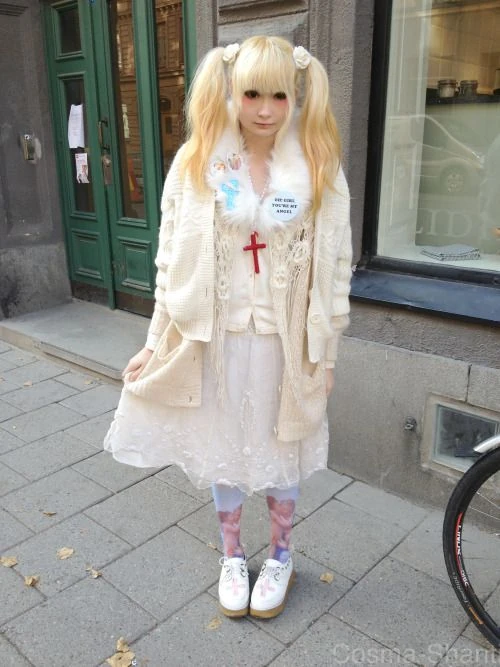
Social Identification and Substyles: Cult Party Kei attracts individuals who want to express their individuality, dreaminess, and love for vintage aesthetics. It's a style for those who want to escape conventional fashion and express their inner femininity in an unconventional way. Substyles of Cult Party Kei include:
• Religious Kei: emphasizing religious motifs, such as crosses, rosaries, or images of saints.
• Dolly Kei: inspired by dolls and vintage aesthetics, with a focus on clothing from the Victorian and Edwardian era.
• Mori Kei: the "forest style", focusing on natural fabrics, calm colors, and patterns inspired by nature.
• Fairy Kei: full of pastel colors, motifs are more fairy-tale and fantastic, with an emphasis on colorful accessories and decorations.
Decora
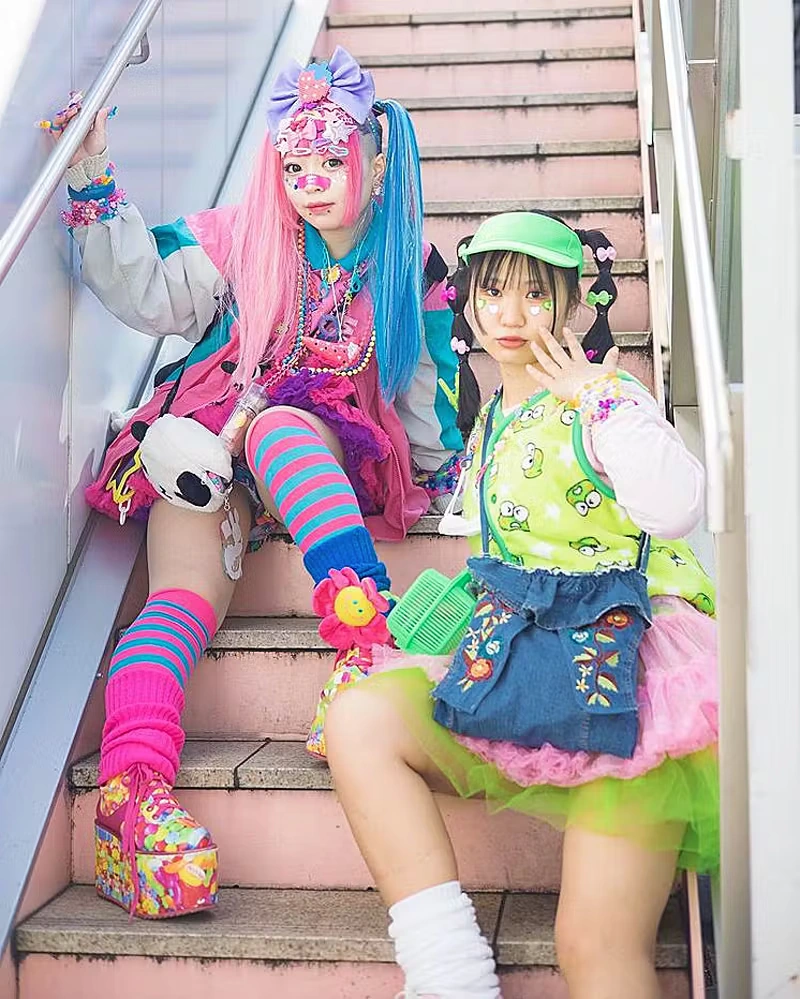
Characteristics and Appearance: Decora is synonymous with color and excess. Those who embrace this style wear bright, often contrasting colors in both clothing and makeup. Multi-layered socks, colorful shirts, and skirts are common. However, the most distinctive element of Decora is the abundance of accessories. Hair decorations, headbands, clips, brooches, necklaces, bracelets, and rings are worn in abundance. Face stickers, vibrant contact lenses, and intense, colorful makeup are other hallmarks of this style.
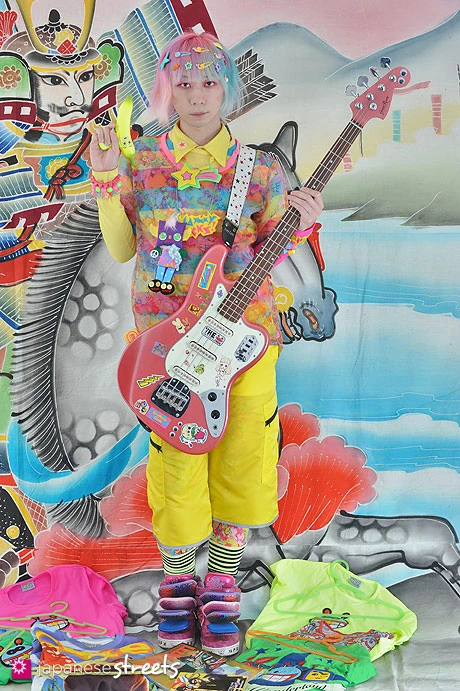
Social Identification and Substyles: Decora is for those who wish to stand out and aren't afraid of bold fashion choices. It's a style for the confident, creative, and daring. While extravagant, it primarily conveys joy and carefreeness. Decora substyles include:
• Decora-chan: Basic Decora style with an emphasis on a variety of colors and accessories.
• Dark Decora: A fusion of Decora with gothic elements, with darker colors and a more mysterious mood.
• Rainbow Decora: Focuses on all the colors of the rainbow, even more colorful and bright than typical Decora.
• Pastel Decora: A softer version focusing on pastel colors but with the characteristic abundance of accessories.
• Cyber Decora: Merges Decora with a cyberpunk aesthetic, incorporating light-up accessories and futuristic elements.
Girly Styles
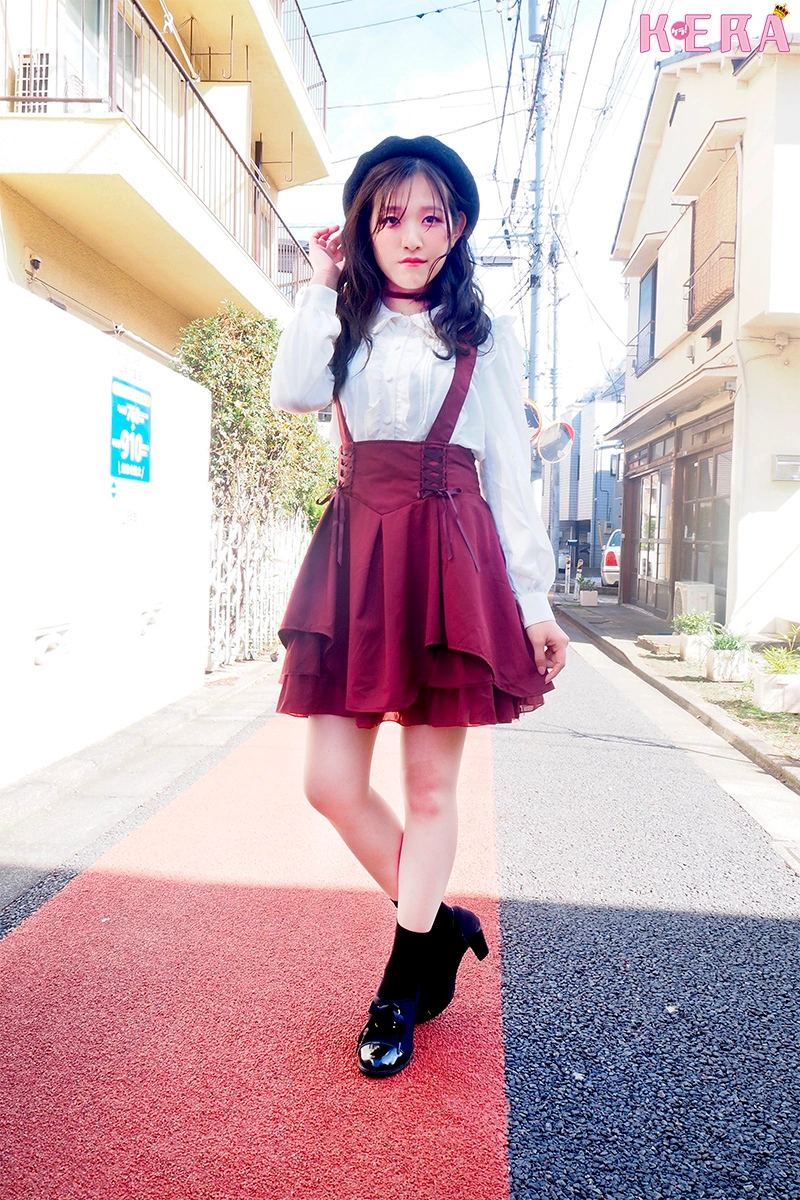
Characteristics and Appearance: Girly Styles primarily feature pinks, whites, pastel shades, and gentle patterns. Clothing often boasts ribbons, frills, laces, and floral motifs. Dresses and skirts are typically slightly flared, emphasizing the innocent and feminine nature of the style. Accessories such as headbands, bows, small purses, and delicate jewelry are essential to complete the overall look. Makeup is subtle, with a focus on rosy cheeks and lightly emphasized eyes.
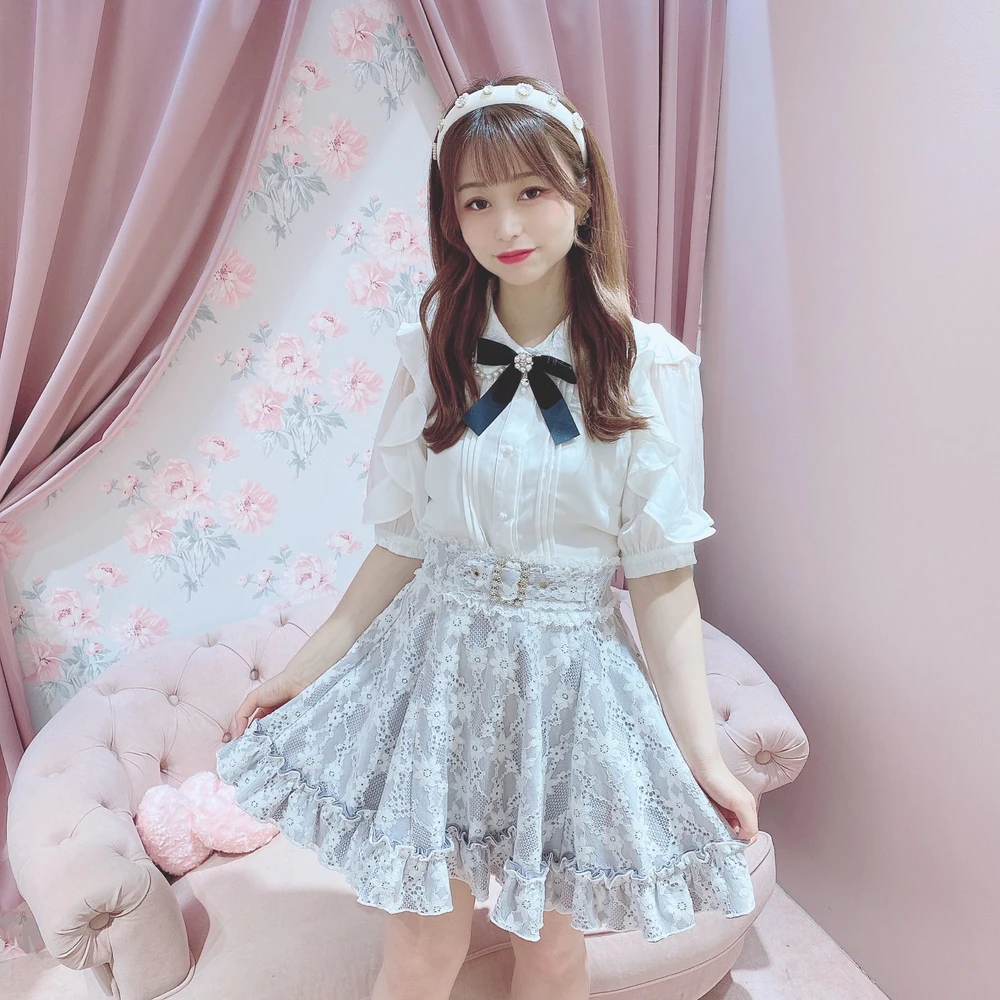
Social Identification and Substyles: Girly Styles is primarily for young women who want to emphasize their innocence and gentleness, but also for those who want to play with fashion by mixing different elements uniquely. Notable Girly Styles subgenres include:
• Himegyaru: Focuses on luxury and elegance, reminiscent of a real princess with plenty of laces, tulle, and satin.
• Romantic Girly: More subdued, emphasizing romantic and vintage elements such as lace, frills, and delicate floral patterns.
• Casual Girly: Combines everyday clothes with feminine touches, creating a more accessible and daily look.
• Sporty Girly: Merges sporty elements with feminine touches like flared skirts or shirts with bows.
Gothic Fashions
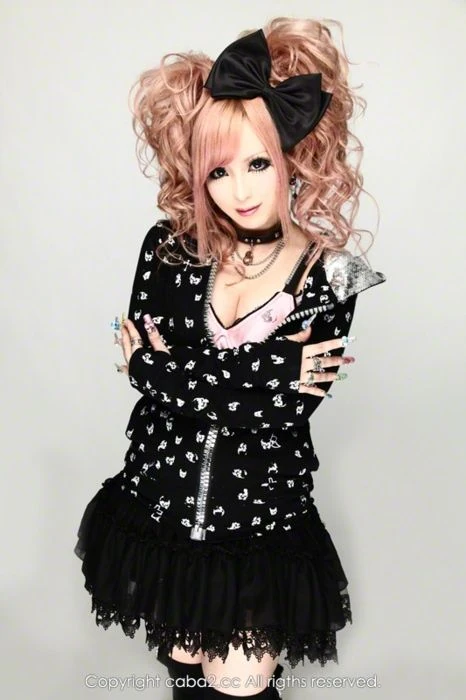
Characteristics and Appearance: Gothic Fashions in Japan involve dark, ornate clothing that often melds romantic and punk elements. Black lace, satin, leather, silver jewelry, crucifixes, and other symbols referencing death and darkness are key elements. Makeup is dramatic, with pale skin, heavily accented eyes, and dark lips. Hairstyles typically are long, sometimes with colored streaks or in a "visual kei" style.
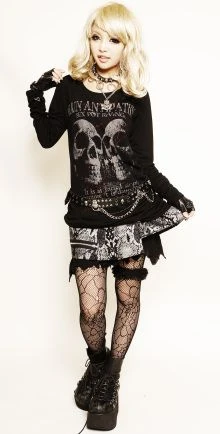
Social Identification and Substyles: Those identifying with Gothic Fashions in Japan are typically teenagers and young adults valuing individuality, artistic expression, and a touch of rebellion. There are several distinct substyles within gothic fashion:
• Elegant Gothic Lolita (EGL): Combines gothic aesthetics with the Lolita style, focusing on elegant, ornate dresses.
• Elegant Gothic Aristocrat (EGA): Centers on a more mature, formal look inspired by aristocratic fashion.
• Punk Gothic: Blends punk and gothic elements like studs, chains, and leather accessories.
• Cyber Gothic: Incorporates futuristic and industrial elements into the gothic aesthetic, often with bright neon accents.
Gyaru Substyles
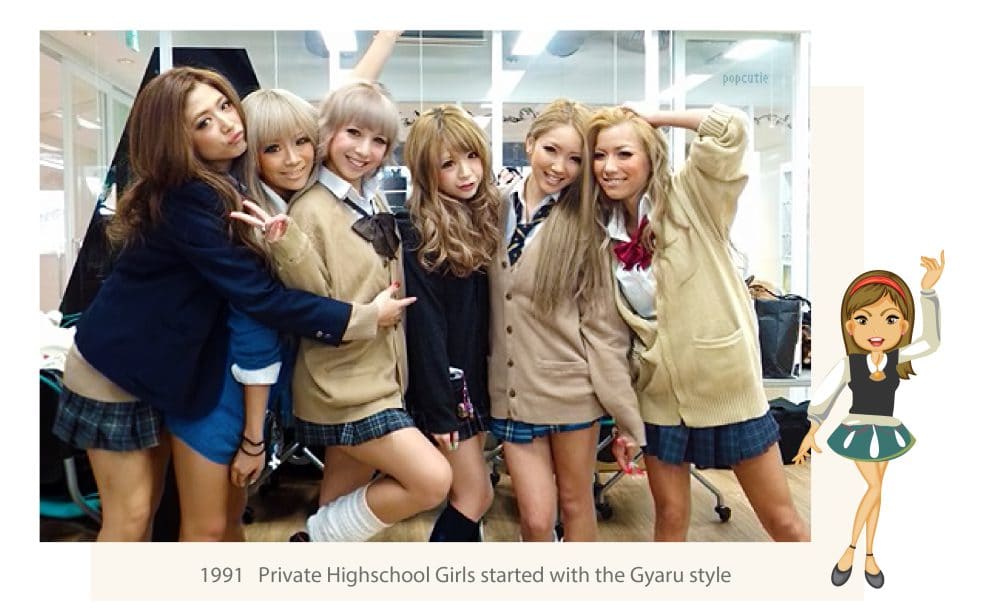
Characteristics and Appearance: Gyaru's distinctiveness lies in its stark contrast to traditional Japanese beauty standards. It features heavily accented eyes, light hair, and bold makeup. Attire is typically extravagant and very feminine: short skirts, heels, jewelry, and rich accessories. This style's boldness is not just in its colors but also in its expression and daring clothing combinations.
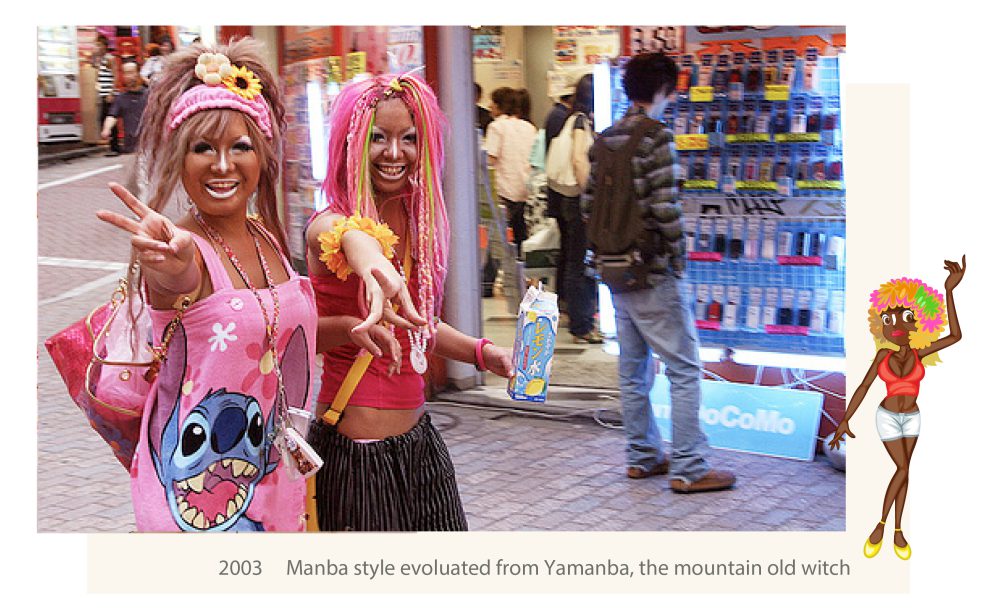
Social Identification and Substyles: Gyaru primarily attracted young women eager to break social barriers and conventions. It conveyed courage, confidence, and a rebellious spirit. Gyaru substyles, such as Kogyaru, Ganguro, Himegyaru, Yamanba, Agejo, Roma Gyaru, and B-gyaru, are just a few of the many variations that showcase the richness and diversity of this phenomenon. For those keen on delving deeper into Gyaru and understanding its profound roots and influence on Japanese youth culture, it's worth consulting the article "Gyaru Style from Harajuku - Japanese fashion defying 'Japanese'". It highlights the style's unique nature and its enduring impact on Japanese fashion.
Kawaii Fashions
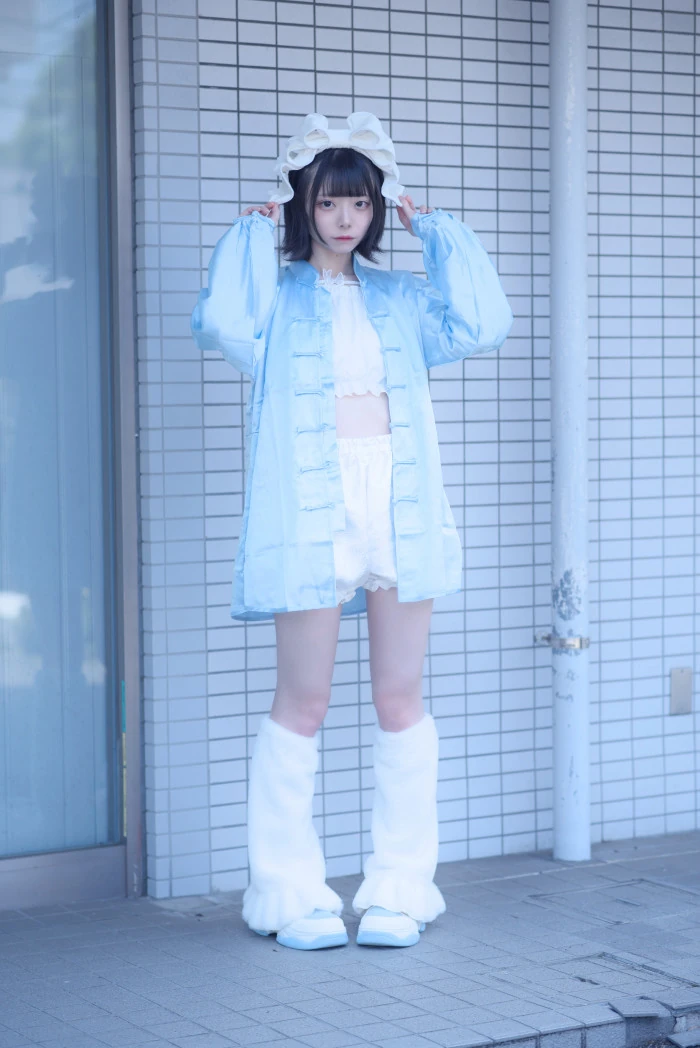
Characteristics and Appearance: Kawaii pertains to everything that is charming, sweet, and innocent. In fashion, it manifests through bright colors, playful patterns, plush toys as accessories, abundant bows, laces, and themes such as animals, clouds, or stars. Outfits are often loose, tailored to a girly silhouette, emphasizing innocence and youth. Makeup is subtle, with soft pink cheeks, light lips, and large, shimmering eyes.
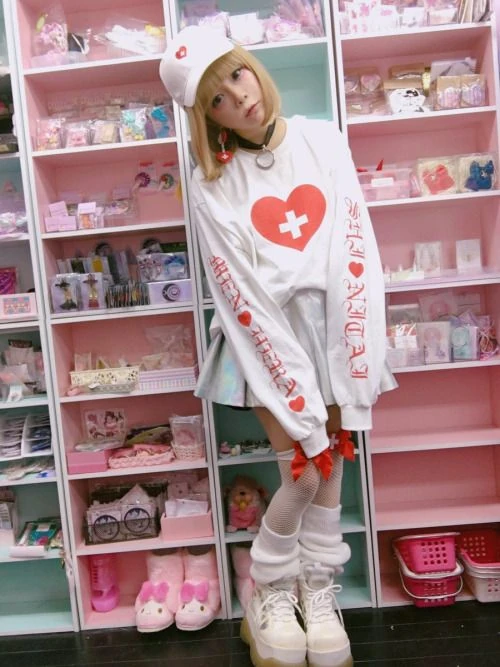
Social Identification and Substyles: Individuals identifying with Kawaii fashion are typically young women, but this style attracts people of all ages who wish to express their innocence, joy, and carefreeness. Among Kawaii substyles, we find:
• Fairy Kei: based on pastel colors and 1980s themes.
• Yume Kawaii: a "dreamy" version of Kawaii with fantastical elements.
• Decora Kawaii: characterized by a plethora of colorful accessories and jewelry.
• Mahou Kei: focused on magical and fairy themes. Kawaii culture is more than just fashion; it's a way of perceiving the world and oneself in it, emphasizing charm, innocence, and the joy of life.
Lolita Styles
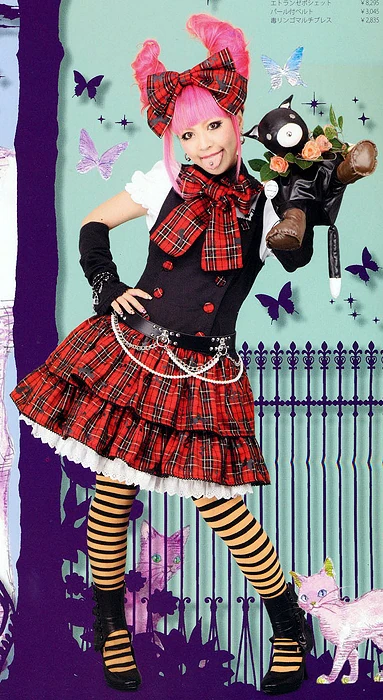
Characteristics and Appearance: Lolita style revolves around intricately adorned, voluminous dresses, laces, ribbons, and hats. Key elements include lace stockings, blazers, and handbags shaped like hearts or other playful forms. Makeup is delicate, emphasizing innocence and youth. Shoes often have chunky soles, and hairstyles are richly decorated with ribbons and ornaments.
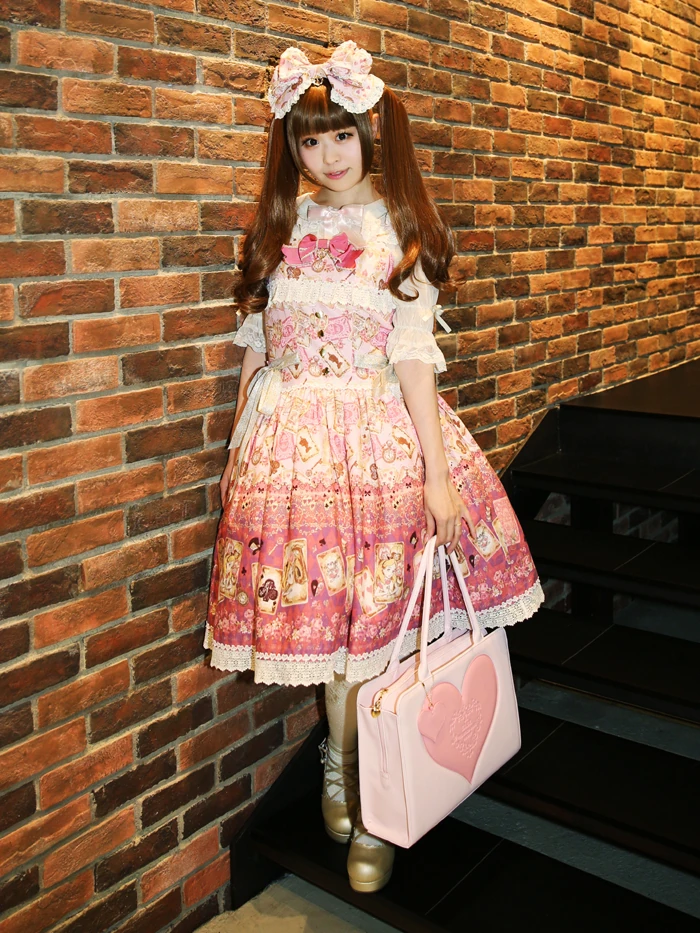
Social Identification and Substyles: Lolita serves as a resistance to societal pressures about maturing and adulthood, as well as an escape from everyday life. Individuals identifying with this style often form communities based on shared interests. Among Lolita substyles, we distinguish:
• Classic Lolita: the most conservative, directly referencing Victorian fashion.
• Gothic Lolita: a fusion of dark colors and motifs with the typical Lolita style.
• Sweet Lolita: pastel colors, animal motifs, and candy themes.
• Punk Lolita: combining punk aesthetics with Lolita's delicacy.
• Country Lolita: rural inspirations, including floral patterns and wide-brimmed hats.
• Wa Lolita & Qi Lolita: merging traditional Japanese and Chinese outfits with Lolita elements. The Lolita style, with its many substyles, is an expression of individuality and offers a chance to present oneself in an unconventional manner in the context of modern Japan.
Natural Fashion Styles
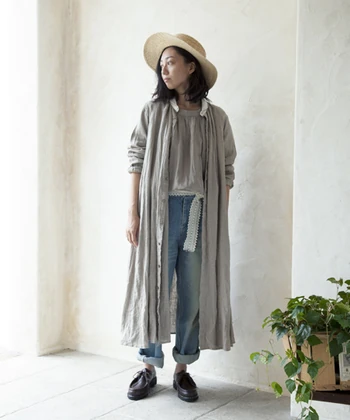
Characteristics and Appearance: Natural Fashion emphasizes simple, often loose cuts, a neutral color palette, and natural fabrics like cotton, linen, and wool. These clothes breathe and are comfortable, making them perfect for everyday wear. Accents like wooden buttons, straightforward embroidery, or subtle embellishments emphasize the connection to nature. Makeup is minimalistic, and hair is either left in its natural state or styled into relaxed hairstyles. Jewelry often incorporates natural materials like wood or stones.
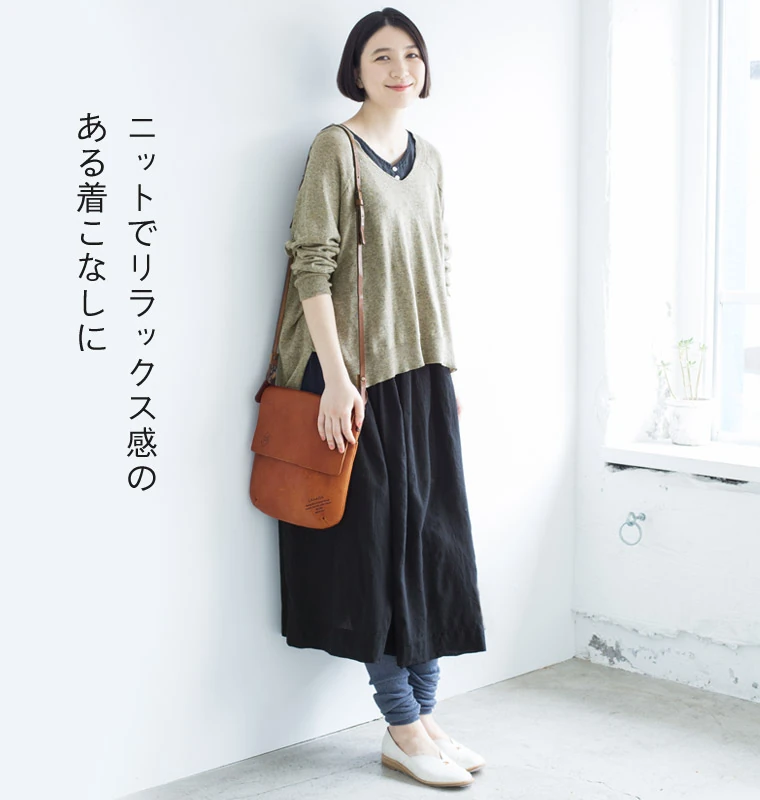
Social Identification and Substyles: Natural Fashion Styles are chosen by those who value comfort, simplicity, and harmony with nature. It's a style for those who wish to live in tune with their environment, minimizing environmental impact. Among the substyles of Natural Fashion, we distinguish:
• Mori Kei (Forest Style): inspired by forest aesthetics, with loose, layered clothes in greens, browns, and pastels.
• Yama Kei (Mountain Style): geared towards an active mountain lifestyle, often accompanied by accessories like backpacks or woolen pom-pom hats.
• Umi Kei (Sea Style): taking inspiration from the seashore, featuring accents like seashells or marine motifs.
Natural Fashion Styles respond to contemporary needs to return to roots and simplicity in a world overwhelmed by consumerism and acceleration.
"Sickly Cute" Styles
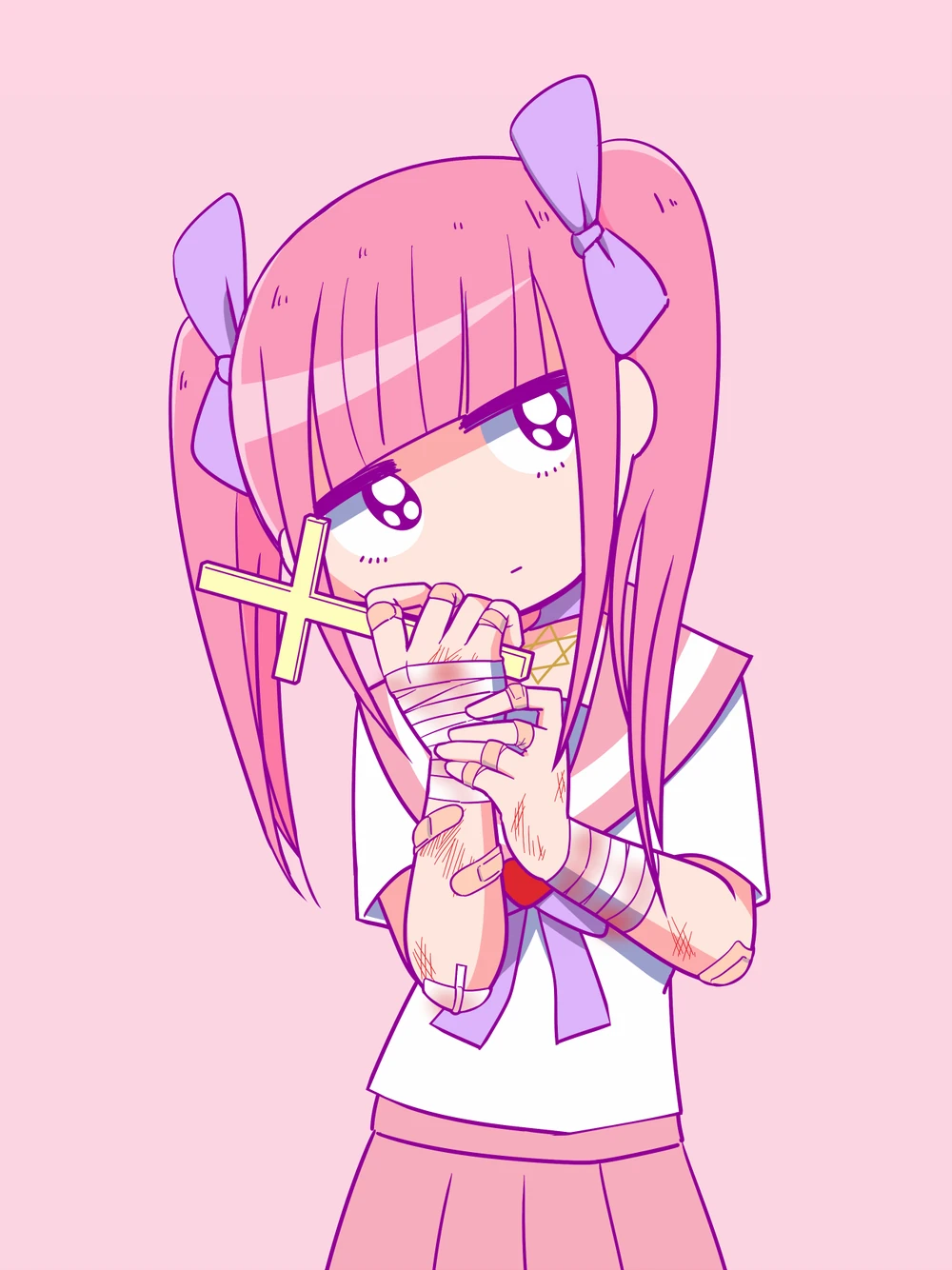
Characteristics and Appearance: "Sickly Cute" merges pastel shades with dark and unsettling motifs. You'll find adorable doll-like dresses in light colors adorned with accents like bandages, medical symbols, tears, or hearts pierced by arrows. Makeup is often light and sweet but might be paired with dark under-eye shadows or faux tears. Jewelry and accessories frequently contain symbols associated with illness, pain, or suffering but are presented in a kawaii aesthetic.
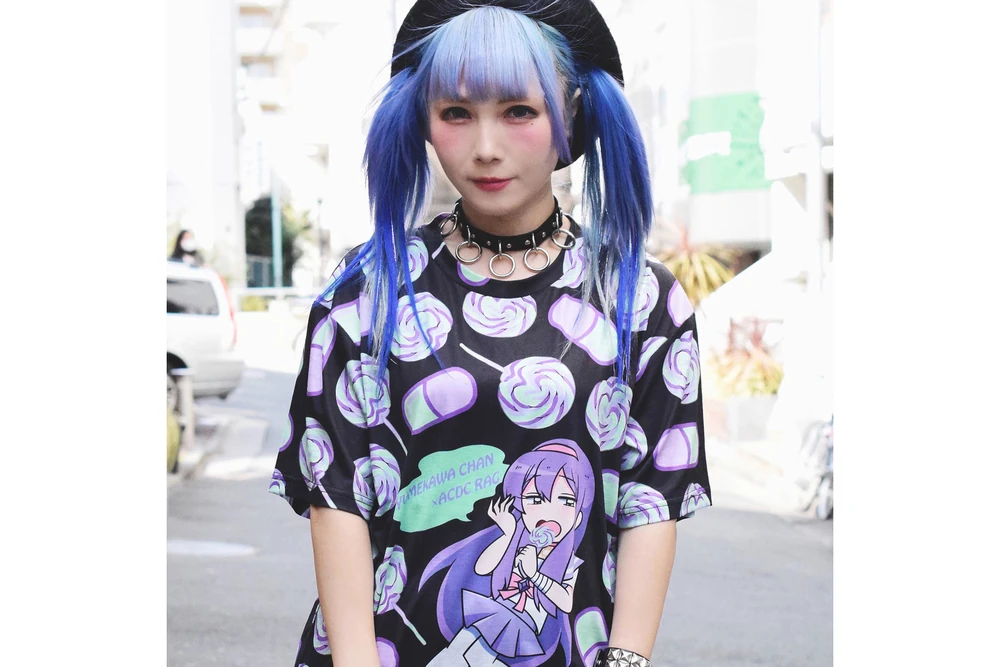
Social Identification and Substyles: "Sickly Cute" Styles became a voice for young people who felt lost, desperate, or overwhelmed by societal pressures. Through this style, they could creatively and authentically express their feelings. Among the "Sickly Cute" substyles, we distinguish:
• Menhera: focuses on mental health topics, portraying them in a cute yet dark manner.
• Kuro Yami Kawaii: a "black, dark cute" style that's more gothic and dark yet still maintains kawaii elements.
• Shiro Yami Kawaii: a "white, dark cute" style, which is brighter and more ethereal but still incorporates dark elements.
The "Sickly Cute" style isn't just a fashion aesthetic but also a cultural expression of feelings often hidden or suppressed in traditional society.
Visual Kei
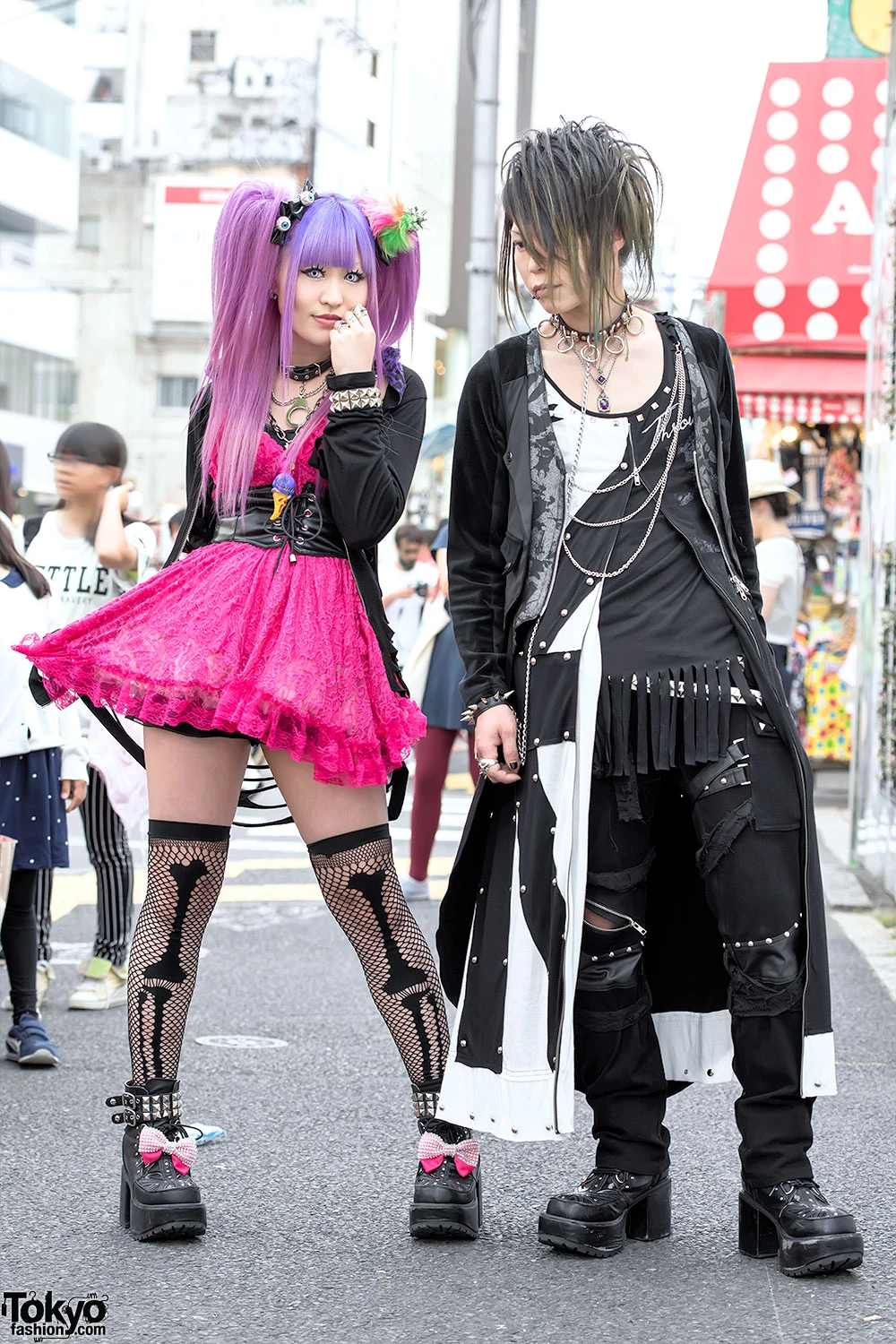
Characteristics and Appearance: Visual Kei is characterized primarily by its bold and often androgynous aesthetics. Artists preferring this style might wear heavy, theatrical makeup regardless of gender. Clothing often draws inspiration from Victorian, Gothic, punk, or even traditional Japanese outfits. Platform boots, lace, leather elements, and colorful and often extravagant hairstyles complete the look. Accessories such as rings, necklaces, or headbands are commonly incorporated.
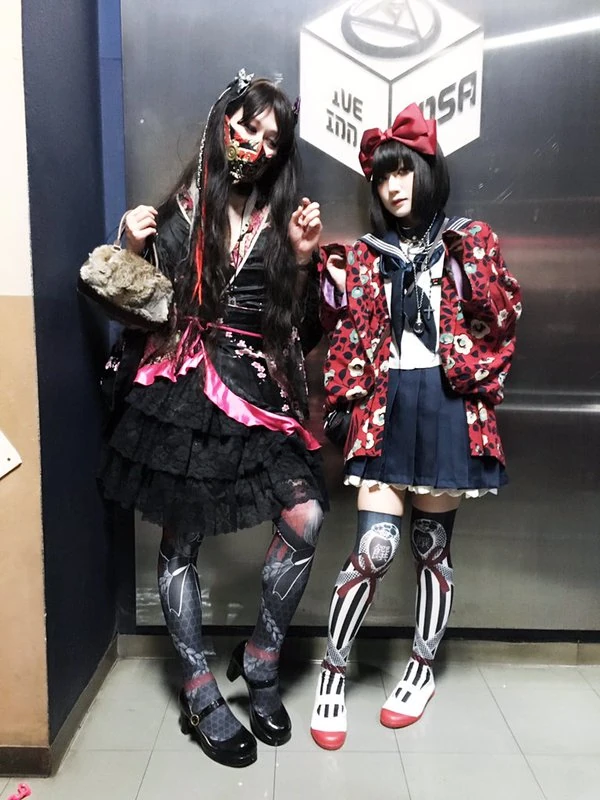
Social Identification and Sub-Styles: Visual Kei is not only about music and fashion but also a subculture whose members identify with values such as individualism, self-expression, and rebellion against conventions. Among the sub-styles of Visual Kei, one can distinguish:
• Oshare Kei: a brighter, more colorful variant that combines pop elements with traditional Visual Kei.
• Eroguro Kei: a dark, gothic style inspired by erotica and the grotesque.
• Angura Kei: refers to traditional Japanese cultures and aesthetics, such as the Showa style.
• Kote Kei: one of the earlier forms of Visual Kei, characterized by a more traditional, gothic look. Visual Kei remains one of the most recognizable and influential Japanese fashion and music trends, impacting the global rock and alternative fashion scene.
Anime as a Fashion Catalyst
One of the first animes that had a clear influence on street fashion was "Sailor Moon". Sailor uniforms became a symbol of fashion innocence and youth, inspiring many young people to experiment with various versions of these outfits in everyday life. Later on, characters from "Tokyo Mew Mew" or "Cardcaptor Sakura" also influenced the popularity of styles such as "magical girl", introducing fantasy elements into everyday outfits like wands, tiaras, or wings.
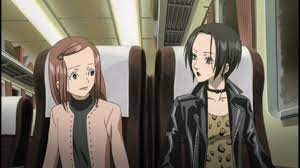
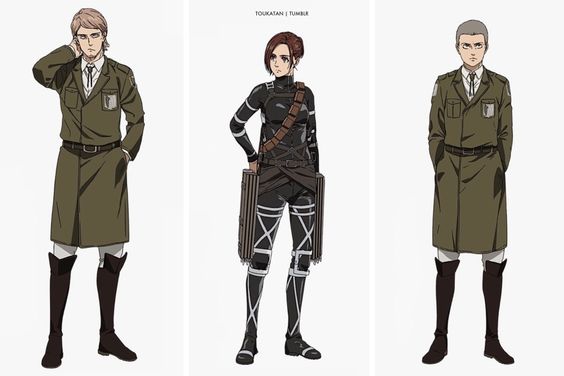
Conclusion
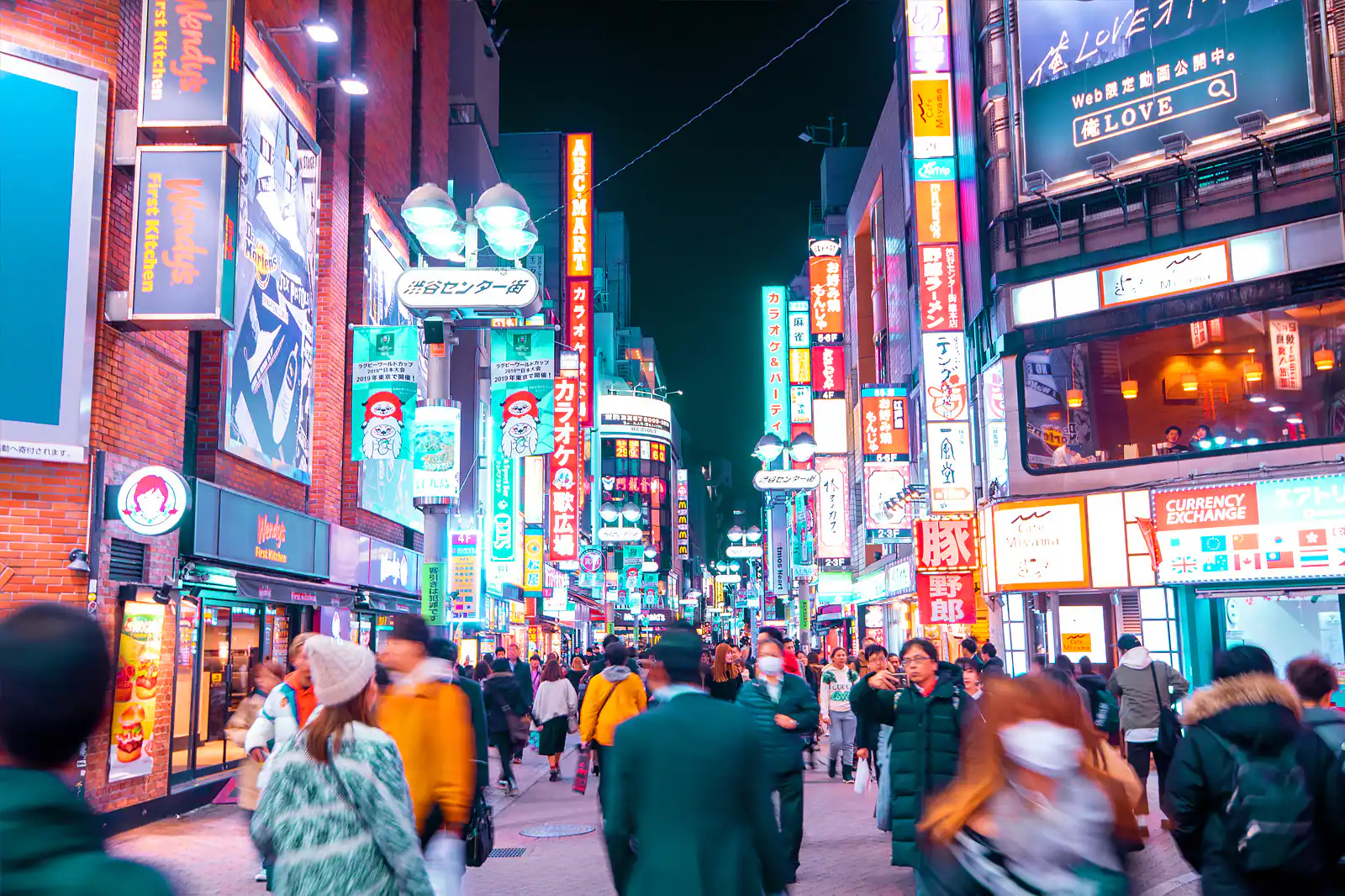
Although it's hard to predict the exact trajectory of future fashion trends, Japanese street fashion, with its unceasing ability to innovate, will surely continue to evolve and inspire fashion enthusiasts worldwide. We might see a greater fusion of traditional Japanese fabrics and techniques with modern technologies and materials. Certainly, however, regardless of the direction it takes, Japanese street fashion will remain a symbol of courage, creativity, and unlimited personal expression.
>> SEE ALSO SIMILAR ARTICLES:
Iwasaki vs. Golden: A Battle for the Honor of Japanese Geisha Traditions
She Taught Us What the Life of Japanese Geishas Truly Is: The Story of Mineko Iwasaki
Women of the Yakuza – Silently Bearing the Scars on Their Bodies and Hearts
"Strong Japanese Women"
see book by the author
of the page
未開 ソビエライ
An enthusiast of Asian culture with a deep appreciation for the diverse philosophies of the world. By education, a psychologist and philologist specializing in Korean studies. At heart, a programmer (primarily for Android) and a passionate technology enthusiast, as well as a practitioner of Zen and mono no aware. In moments of tranquility, adheres to a disciplined lifestyle, firmly believing that perseverance, continuous personal growth, and dedication to one's passions are the wisest paths in life. Author of the book "Strong Women of Japan" (>>see more)
Personal motto:
"The most powerful force in the universe is compound interest." - Albert Einstein (probably)
Mike Soray
(aka Michał Sobieraj)
未開 ソビエライ
An enthusiast of Asian culture with a deep appreciation for the diverse philosophies of the world. By education, a psychologist and philologist specializing in Korean studies. At heart, a programmer (primarily for Android) and a passionate technology enthusiast, as well as a practitioner of Zen and mono no aware. In moments of tranquility, adheres to a disciplined lifestyle, firmly believing that perseverance, continuous personal growth, and dedication to one's passions are the wisest paths in life. Author of the book "Strong Women of Japan" (>>see more)
Personal motto:
"The most powerful force in the universe is compound interest." - Albert Einstein (probably)
Mike Soray
(aka Michał Sobieraj)
Write us...
Ciechanów, Polska
dr.imyon@gmail.com
___________________
inari.smart
Would you like to share your thoughts or feedback about our website or app? Leave us a message, and we’ll get back to you quickly. We value your perspective!




